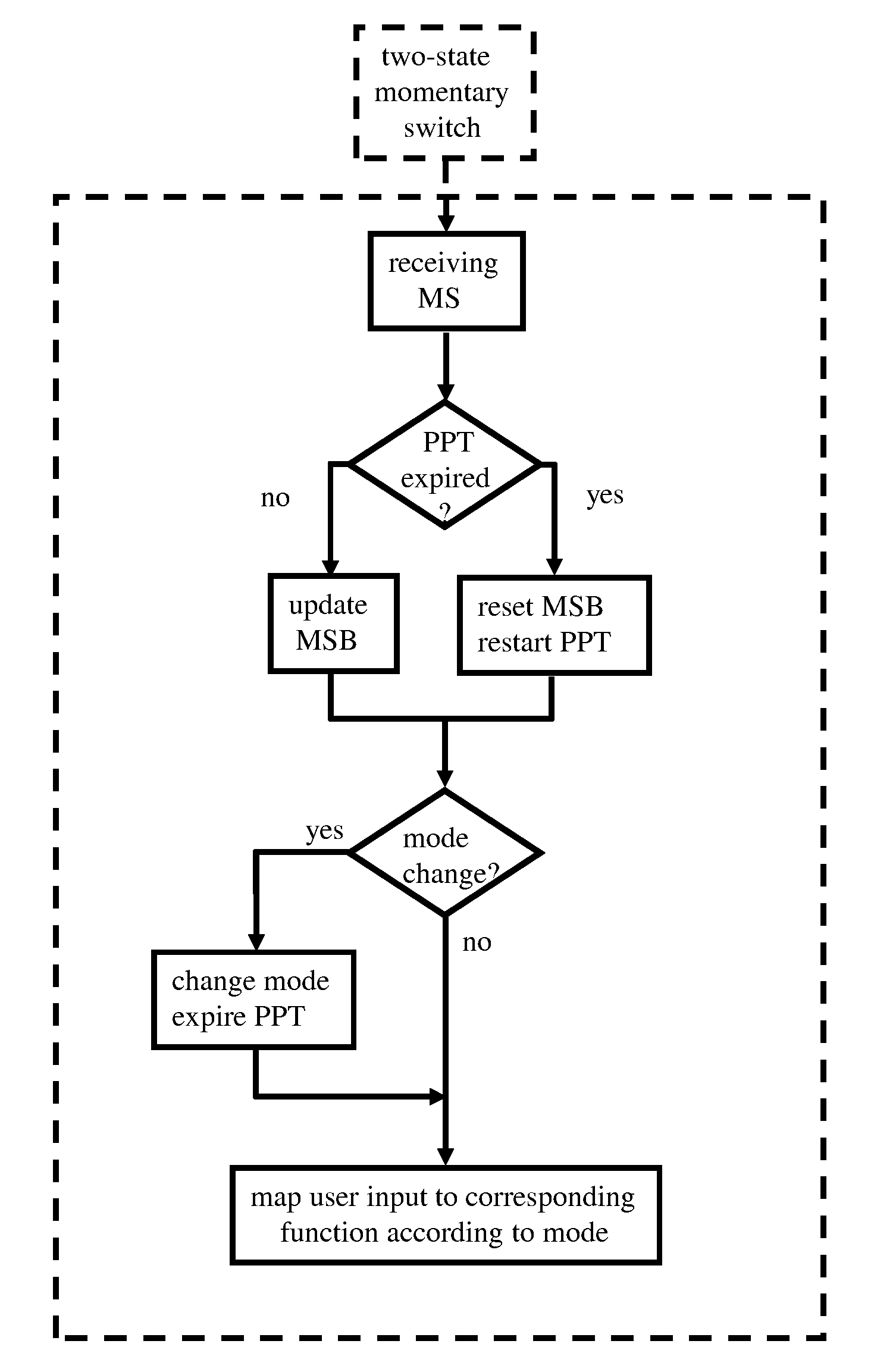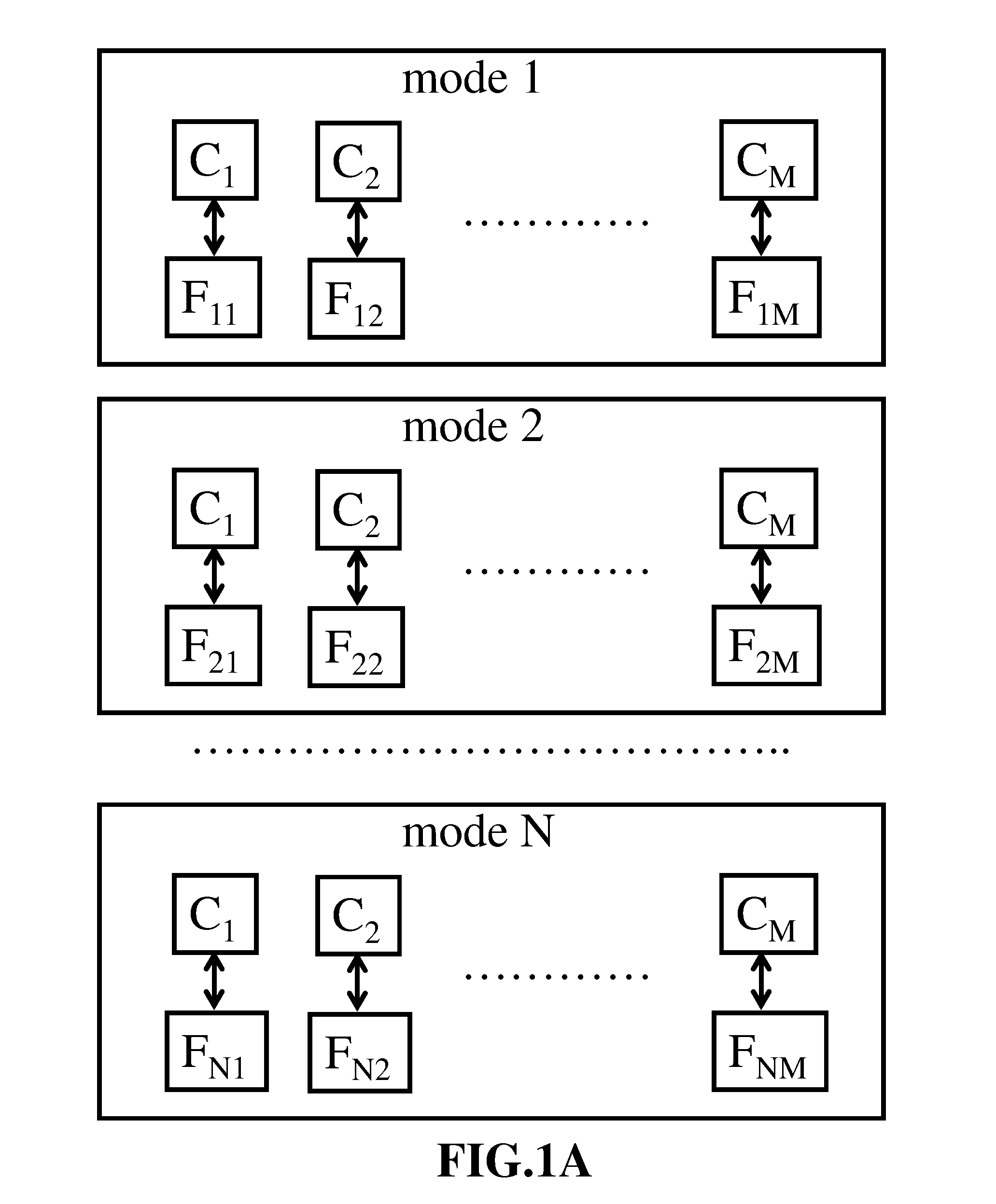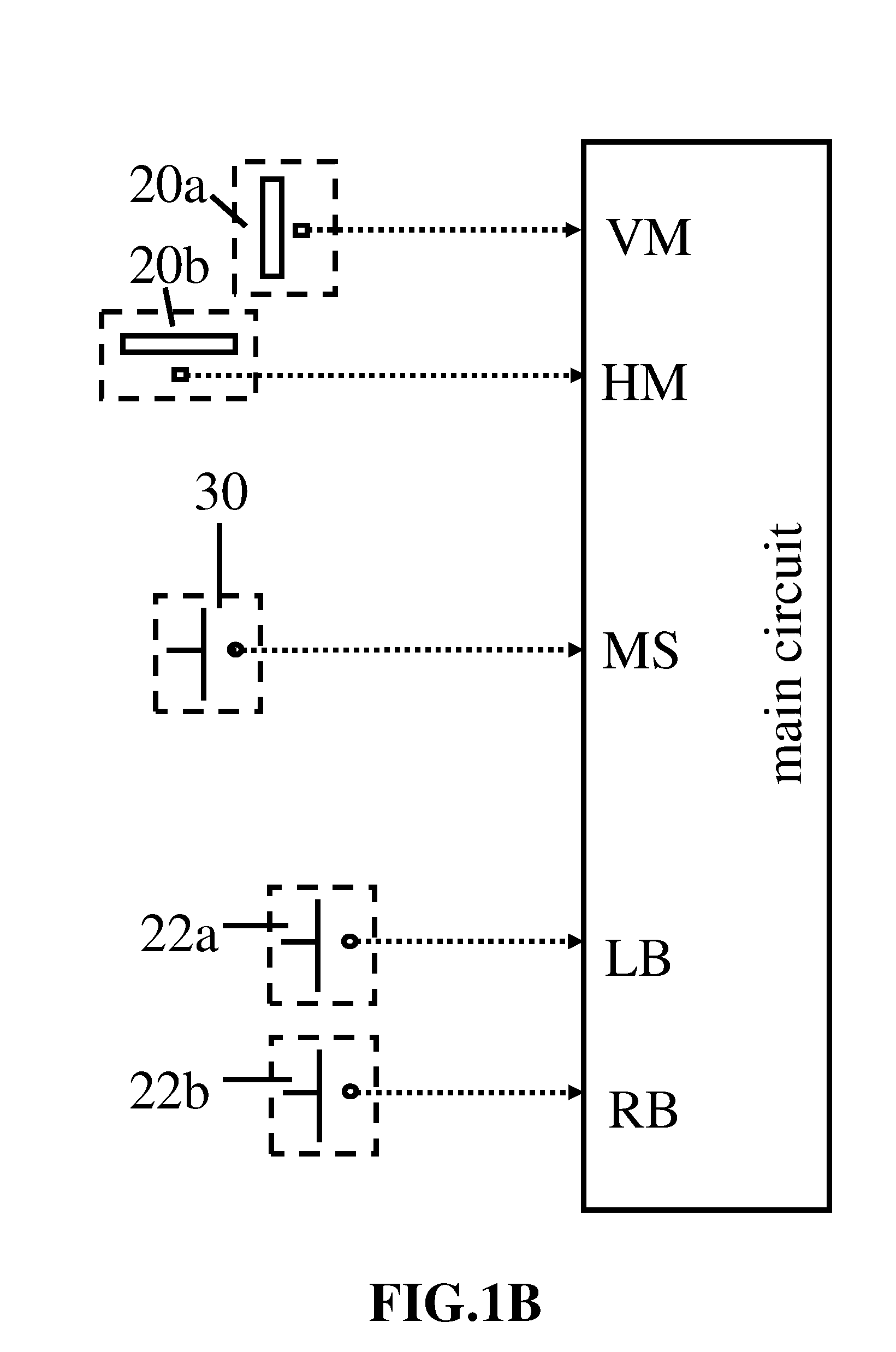Multi-function computer pointing device
- Summary
- Abstract
- Description
- Claims
- Application Information
AI Technical Summary
Benefits of technology
Problems solved by technology
Method used
Image
Examples
Embodiment Construction
—PREFERRED EMBODIMENTS OF THE FIRST ASPECT OF THE PRESENT INVENTION
[0127]The first aspect of the present invention includes an N-persistent-mode pointing device and a 2N-mixed-mode pointing device. For the N-persistent-mode pointing device of the present invention, an N-persistent-mode correspondence is established where each control is assigned to control a specific (suitable) function in each persistent mode. FIG. 1A depicts the N-persistent-mode correspondence for M controls (C1,C2, . . . CM) to control up to N×M functions (F11,F12, . . . FNM). Some of these functions may be redundant or null functions (the corresponding control in the corresponding mode has no effect). Each double-headed arrow in FIG. 1A represents a specific mapping between a specific pair of control and function. With this arrangement, the N-persistent-mode pointing device of the present invention may control as many as N times functions as a single-mode design with same number / type of controls. Construction o...
PUM
 Login to View More
Login to View More Abstract
Description
Claims
Application Information
 Login to View More
Login to View More - R&D
- Intellectual Property
- Life Sciences
- Materials
- Tech Scout
- Unparalleled Data Quality
- Higher Quality Content
- 60% Fewer Hallucinations
Browse by: Latest US Patents, China's latest patents, Technical Efficacy Thesaurus, Application Domain, Technology Topic, Popular Technical Reports.
© 2025 PatSnap. All rights reserved.Legal|Privacy policy|Modern Slavery Act Transparency Statement|Sitemap|About US| Contact US: help@patsnap.com



